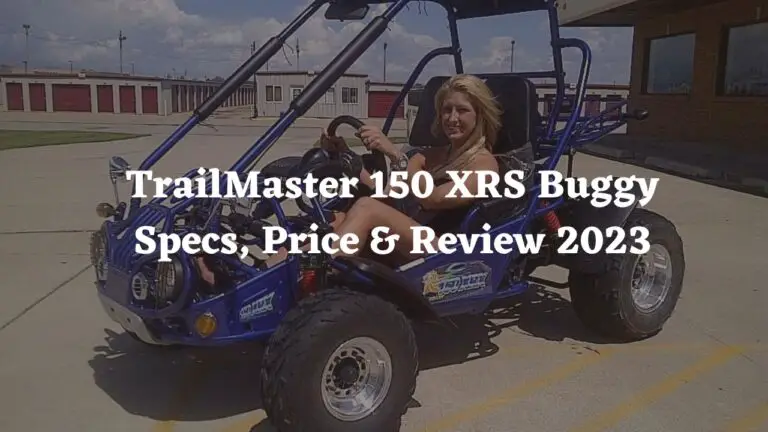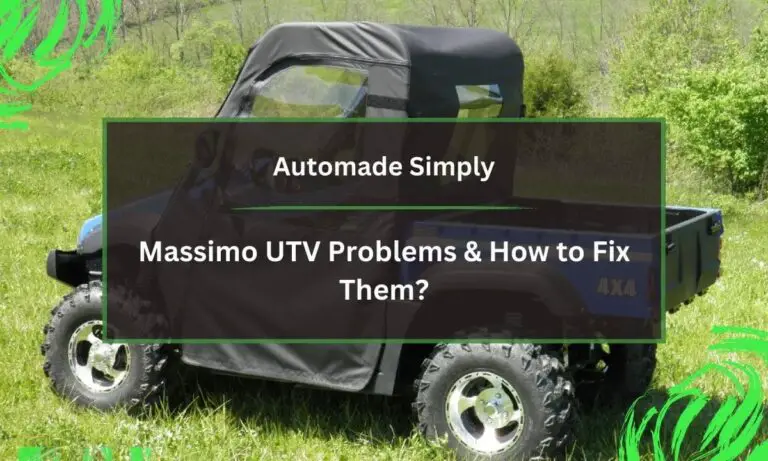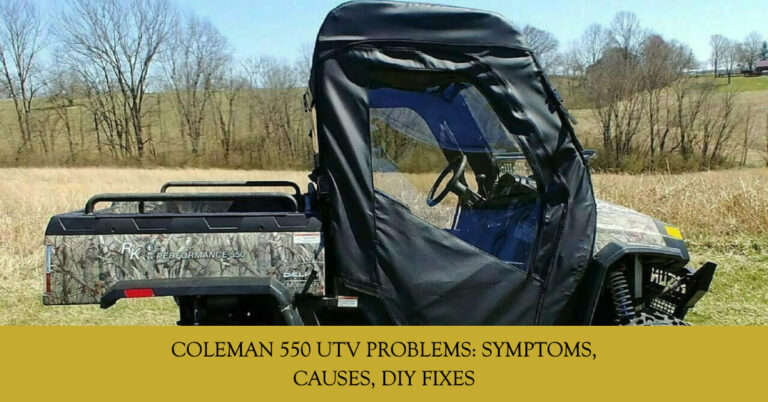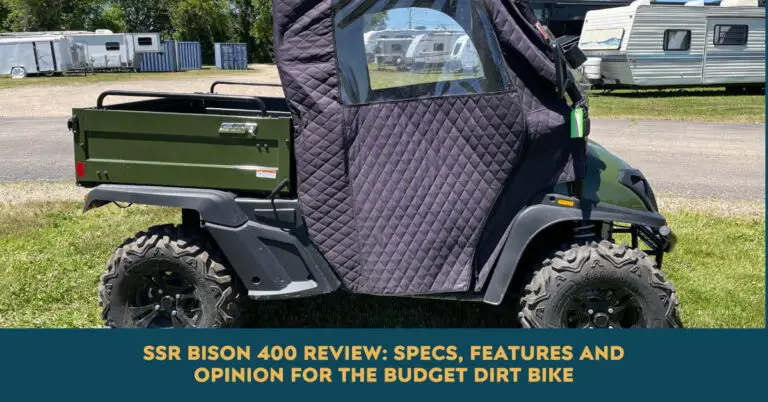Landmaster UTV Problems and How to Fix Them

Off-roading is an exciting hobby that allows you to explore the great outdoors. But as any owner knows, UTVs can also break down and cause headaches when issues pop up. As one of the most popular sport utility task vehicles (UTVs) on the trails, Landmaster UTVs are built tough yet still run into their fair share of problems.
So what are the most common Landmaster UTV problems owners face, and how can you diagnose and fix them? In this complete guide, we’ll outline the top Landmaster UTV problems ranging from engine issues to drivetrain troubles. We’ll provide tips to troubleshoot each problem and repair or replace parts to get your Landmaster running smoothly again.
Table of Contents
Overview of Popular Landmaster UTV Models
First, let’s do a quick overview of Landmaster’s lineup of durable, trail-ready UTVs.
The company’s current models include:
- Landmaster Legend: Their flagship crew-sized UTV packed with premium features and accessories. Powered by a 963cc Kawasaki twin-cylinder engine.
- Landmaster Discovery: A midsize, 2-seat Landmaster model that’s lighter and more nimble on tight trails. Runs a 749cc single-cylinder engine.
- Landmaster Maverick: Their most affordable rec/utility UTV with good value for the price. Standard 400cc single-cylinder engine.
- Landmaster Defender: A new 2-seat utility UTV similar to the Discovery but with improved cargo capacity and towing ability.
No matter which Landmaster model you own, they’re all built with heavy-duty parts like thick frame tubes, steel cargo beds, true 4-wheel drive, and independent suspension. This construction allows Landmaster UTVs to tackle rugged terrain with confidence.
But even the toughest machines experience problems after exposure to mud, snow, rocks, roots and more. By learning to identify issues and make repairs yourself, you can save money on shop bills and prevent breakdowns on the trail.
Now let’s dig into diagnosing and fixing the most common Landmaster UTV problems.
Frequent Landmaster UTV Engine Problems
The engine provides power to conquer obstacles, so any engine troubles can bring your ride to a frustrating halt. Here are some of the usual engine issues Landmaster owners encounter:
Overheating Problems
One of the most frequent Landmaster UTV problems is the engine overheating on tough trails.
This is often caused by coolant leaks, a stuck thermostat not regulating temperature, low coolant levels, or a failing radiator fan. Overheating can lead to blown head gaskets, cracked engine blocks or complete breakdowns.
To diagnose overheating: Watch the temperature gauge when riding, especially on inclines. If it creeps into the red, stop and let the engine cool. Check the radiator hoses and connections for cracks and leaks. Look for white exhaust smoke, another sign of overheating.
To fix, try:
- Refilling the coolant/antifreeze reservoir if low
- Replacing leaky radiator hoses
- Installing a new thermostat
- Testing the radiator fan and wiring for problems
- Cleaning debris blocking airflow through the radiator
- Upgrading to a heavy-duty, high-output radiator fan
Stopping overheating issues quickly can prevent expensive engine damage down the road. Never ignore warning signs like high temperature readings or steaming radiators.
Loss of Power Problems
Losing power on climbs or when accelerating is another common engine complaint with Landmasters. Here are some likely causes and fixes:
- Dirty air and fuel filters – Clogged air filters and contaminated old gas restrict airflow and fuel delivery. Replace filters and drain old gas.
- Ignition problems – Faulty spark plugs, plug wires, coils or a weak CDI ignition box can cause misfires, limiting power. Replace worn ignition components.
- Low compression – Over time, piston rings and valve seals wear, reducing compression and power. Have a mechanic test compression and rebuild top end if needed.
- Exhaust restrictions – Damaged exhaust pipes or mufflers hamper engine performance. Inspect the exhaust system and replace any crushed pipes/bad mufflers.
Sudden losses of power indicate a specific problem, versus gradual losses which signify overall engine wear. Troubleshoot the issue methodically to pinpoint and repair the failed component.
Excessive Oil Consumption
Landmasters use oil as engines wear, but burning too much oil points to issues. Possible causes include:
- Worn piston rings – Letting oil slip by into the combustion chamber. Rings lose their tension over time.
- Damaged valve stem seals – Causing oil to be sucked into the cylinders. Seals get brittle and crack with heat cycles.
- Incorrect oil weight – Thinner oils burn faster. Use the manufacturer recommended viscosity.
- Clogged air filter – Forcing engine to work harder, burning more oil. Replace dirty filters.
- Leaky gaskets – Allowing oil to seep externally. Replace worn gaskets.
Fixing oil burners requires tearing down the top end. A mechanic can best diagnose if rings or seals are shot by doing a compression test. Expect to pay for significant repairs. Use thicker oil as a temporary band-aid.
Knocking/Ticking Noises
Hearing odd knocking or tapping noises from the Landmaster’s engine? Several issues can cause this:
- Low oil level – Letting moving parts rub and knock. Check oil level frequently and top off.
- Exhaust leak – Creating a tinny tapping sound. Feel for exhaust leaks and replace gaskets.
- Loose components – Allowing parts to vibrate and knock around. Inspect and tighten fasteners.
- Timing chain stretch – Causing chain rattle. Requires a mechanic to re-time the motor.
- Worn bearings – Allowing crankshaft play. Bearings may need replacement.
- Piston slap – Pistons rocking at low RPMs until expanding. Warm engine gently until knock disappears.
Pinpoint if the noise happens at idle, high RPMs, when accelerating, etc. to help diagnose. Knocking noises mean something is wrong internally and should not be ignored.
Tracking Down Landmaster UTV Electrical Problems
Like any machine, Landmasters can develop finicky electrical issues that are frustrating to nail down. Start with easy system checks, then move to more detailed diagnoses:
Basic Electrical Checks
- Dead battery – Weak batteries fail to turn over or power accessories. Load test battery and replace if under 500 cold cranking amps.
- Loose terminals – Vibration causes electrical connections to loosen over time. Check terminals are tight and free of corrosion.
- Blown fuse – Shorts or overloads burn out fuses, cutting power. Check all fuses against circuit diagrams and replace blown ones.
- Wiring damage – Accident debris or rodents can damage wiring insulation, causing shorts. Inspect wiring harness for cuts, abrasions, or chewed wires.
- Dirty grounds – Soil, mud, and corrosion buildup on grounds impedes current flow. Scrub ground wires and terminal connections clean.
- Relay failure – Mechanical relays wear out over time. Swap suspect relays with identical spares to test.
Doing these basic electrical system checks takes only a few minutes and can fix many minor electrical gremlins.
Advanced Electrical Diagnosis
For complicated no-start or electrical failures, more advanced testing is needed:
- Use a multimeter to backprobe and test voltage at different points in each circuit. Compare readings to a wiring diagram to isolate faults.
- Test for shorted or open circuits that could be draining or blocking power flow. Shake wiring harnesses to check for internal breaks.
- Make sure the ECU and other engine electronics are providing proper signals for things like injector firing, coil charging, etc.
- Check for loose or corroded connections anywhere in the wiring harness. Even small amounts of corrosion can cause voltage drops.
- Inspect behind dash panels and insulation for rodent damage. Mice love chewing through wires.
Be methodical and patient tracing electrical issues step-by-step. Off-road abuse is hard on delicate wiring. Fix damage before it leaves you stranded on the trail.
Diagnosing and Fixing Common Landmaster UTV Brake Problems
Braking issues make UTVs dangerous to operate. Don’t ignore any signs of brake trouble. Here are some common Landmaster brake problems and solutions:
Weak Brakes
Over time, brake pads wear and lose stopping power. Other causes include:
- Leaking brake fluid – Allowing air into the lines. Check master cylinder and caliper seals for external leaks.
- Trapped air – Compressing instead of transferring pressure. Bleed brakes to purge air bubbles.
- Worn rotors – Get thin and warp over time, reducing grip. Resurface or replace warped rotors.
- Sticking calipers – Preventing full pad contact with rotors. Lubricate caliper pins and slides.
- Blocked fluid passages – Keeping fluid from reaching calipers. Flush debris from brake lines.
Fix weak brakes ASAP before an accident occurs. Start with the easiest solutions first.
Pulling to One Side
If the UTV pulls left or right under braking, it indicates a problem:
- Bad caliper – Sticking and locking one brake. Rebuild or replace caliper if inspection reveals issues.
- Pad contamination – Causing uneven wear. Sand down any glazing.
- Air bubbles – Make brakes spongy and uneven. Bleed brakes thoroughly.
- Leaking brake hose – Can cause one side to have less pressure. Replace damaged rubber hoses.
- Bad master cylinder – Failing to distribute pressure evenly. Test master cylinder operation and rebuild/replace as needed.
Uneven braking is a serious safety concern. Take time to determine the root cause instead of just masking it.
Noisy Brakes
Landmasters used hard off-road can develop annoying brake squeals, squeaks and vibrations:
- Glazed pads – Get shiny spots that vibrate against rotors. Lightly sand pads to restore grip.
- Dust buildup – Causes squeaks and squeals, especially when wet. Clean rotors and pads.
- Warped rotors – Pulsate and cause steering wheel vibration. Machine or replace warped rotors.
- Loose components – Allow brake parts to rattle around. Check and tighten bolts, brackets, and calipers.
- Worn-out pads – Old pads lose damping material, causing metal vibrations. Replace with new pads and shims.
Noisy brakes are distracting and annoying. Take time to diagnose instead of just living with the noise.
Repair any Landmaster brake problems promptly before your next ride. Properly functioning brakes are a critical safety component.
Troubleshooting Common Landmaster UTV Steering Problems
Precise steering is essential when riding off-road. Here are some steering-related issues Landmaster owners commonly experience:
Excess Steering Play
Excess play or looseness when turning the wheel points to worn components:
- Tie rod ends – These ball joints wear and get sloppy over time. Check for clunking during turns and replace if loose.
- Ball joints – Wear allows up-down wheel movement. Grab the wheel and feel for play. Replace worn joints.
- Steering column – The collapsible column can be knocked out of alignment. Inspect closely and realign/replace parts as needed.
- Loose fasteners – Vibration loosens bolts over time. Retorque all steering component and linkage bolts to spec.
Take time to pinpoint the exact worn part instead of just cranking down on parts unnecessarily. Replace components before play gets dangerous.
Pulling in One Direction
Two common causes if your Landmaster constantly wants to turn one way:
- Alignment – Improper toe settings make it wander and pull. Perform a professional 4-wheel alignment.
- Tire wear – Uneven tire tread wear creates pull. Check for bad wheel bearings or worn ball joints that cause abnormal wear, then replace tires or rotate as needed.
Pulling and wandering makes the UTV tiring to drive. Get the wheels properly aligned if you want it to track straight.
Loose or Unstable Handling
If the UTV feels wobbly and hard to control:
- Low tire pressure – Makes the steering feel vague and loose. Inflate tires to proper PSI.
- Unbalanced wheels – Causing steering wheel vibration. Balance or replace damaged wheels.
- Bad shocks – Allow chassis movement that alters steering feel. Test and replace worn-out shocks.
Any chassis, suspension, or tire issue that allows the wheels to move erratically will make the UTV hard to steer precisely.
Don’t overlook important steering system maintenance that keeps you in control.
Diagnosing Common Landmaster UTV Drivetrain Problems
The Landmaster’s drivetrain must reliably deliver engine power to the wheels. Watch for these potential problem signs:
High-Pitched Whining
Hearing a loud whirring or whining noise? Potential sources include:
- Bad CV joint – Torn CV boots allow dirt inside, damaging joints. Replace any torn or clicking CV axle shafts.
- Drive belt – Frayed or cracked belts whine under load. Inspect belts closely and replace if glazing, cracks, or missing chunks are present.
- Gear damage – Chipped, broken, or worn gears whine excessively. Have a shop inspect the transmission and differentials if whining is traced to the gears.
High-pitched drivetrain noises point to a specific damaged component. Don’t just cover it up with gear oil – find and replace the problem part.
Vibration at Speed
If vibrating on the highway or at mid-range speeds:
- Wheel balance – Mud stuck inside wheels throws off balance. Disassemble, clean, and properly balance wheels.
- Tire wear – Bad wheel bearings cause choppy wear patterns. Replace bearings and worn tires.
- Driveshaft – Dented driveshafts become unbalanced. Inspect and replace dented shafts.
- Engine mounts – Cracked mounts transmit vibrations. Inspect condition and re-torque/replace mounts.
Most vibes at speed come from unbalanced tires, wheels, or driveshafts. High RPM drivetrain parts like axle shafts can also cause buzzing.
Loss of Power
If the engine revs freely but the UTV loses power, look for:
- Clutch failure – Worn clutch plates slip and don’t transfer power. Test and rebuild/replace clutch components as needed.
- Transmission issues – Internal damage prevents shifting gears. Check shift forks, gears, synchros inside transmission and repair.
- Drive belt failure – Severely cracked or broken belts fail to transmit engine torque. Replace damaged belts immediately.
- Seized axleshafts – Rust or contamination welds shafts inside axle tubes. Replace locked axleshafts.
Sudden drivetrain power losses mean a specific component has failed. Methodically determine the faulty part instead of guessing.
By listening for unusual noises and sensations while riding, you can detect problems early before they leave you trailside. Learn your Landmaster’s normal sounds and behaviors. Any changes likely mean looming repairs.
Stay on top of routine UTV maintenance and operate responsibly to maximize the life of drivetrain components.
Preventing Landmaster UTV Problems
While repairs are inevitable, you can head off many issues through diligent preventive maintenance:
- Follow factory guidelines – Stick to the manufacturer’s recommendations for oil changes, filter replacements, lubrication, fluid flushes, valve adjustments, cooling system care, and all basic maintenance.
- Wash regularly – Rinse off mud and dirt before it bakes on and causes abrasive wear. Pay attention to radiators, belts, brake parts, and axles.
- Address leaks quickly – Don’t let oil, coolant and brake fluid leaks continue unfixed to prevent further damage or failure down the road.
- Inspect frequently – Look for fraying drive belts, loose bolts, cracking hoses, weeping seals, uneven tire wear, and other signs of impending problems.
- Use quality parts – Better aftermarket components often outlast OEM parts. Buy based on reputation, not just price.
- Fix damage immediately – Broken or bent parts only get worse with use. Repair crash damage right away.
- Store properly – Avoid deterioration by storing UTVs under cover with fuel stabilizer when not in use for extended periods.
Putting in a little prevention work vastly extends the trouble-free lifespan of any Landmaster UTV.
Conclusion
Like any hard-working machine, Landmaster UTVs need periodic repairs and service to stay in tip-top shape. But armed with the diagnostic tips in this guide, you can detect problems early before small issues snowball into major failures.
Learn the warning signs unique to each Landmaster system. Engine knocks, steering wander, burning smells – any change in normal behavior indicates a looming repair. Catching problems quickly also makes repairs cheaper in most cases.
Implement a routine maintenance schedule to inspect critical components and prevent predictable failures. Refresh fluids, replace wear items, and fix issues before your next ride. Properly caring for your Landmaster UTV will keep it working reliably for years of off-road fun.







